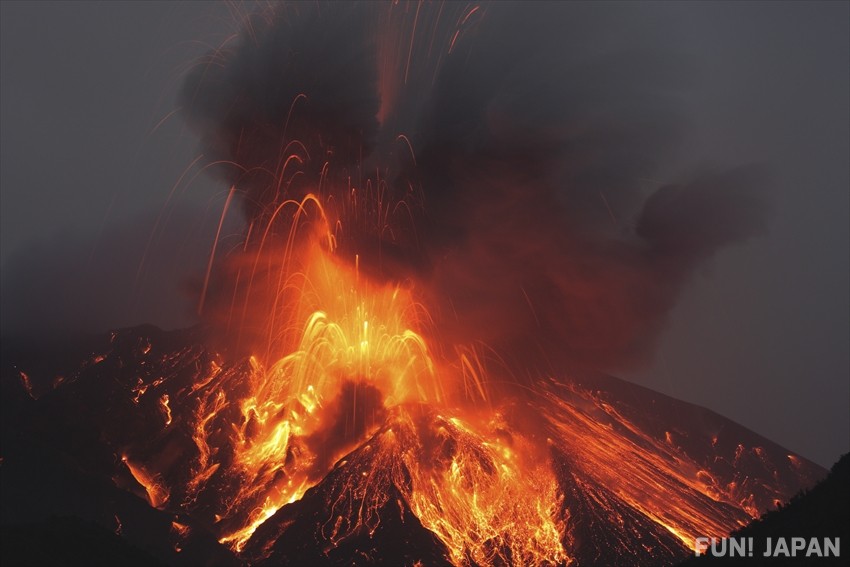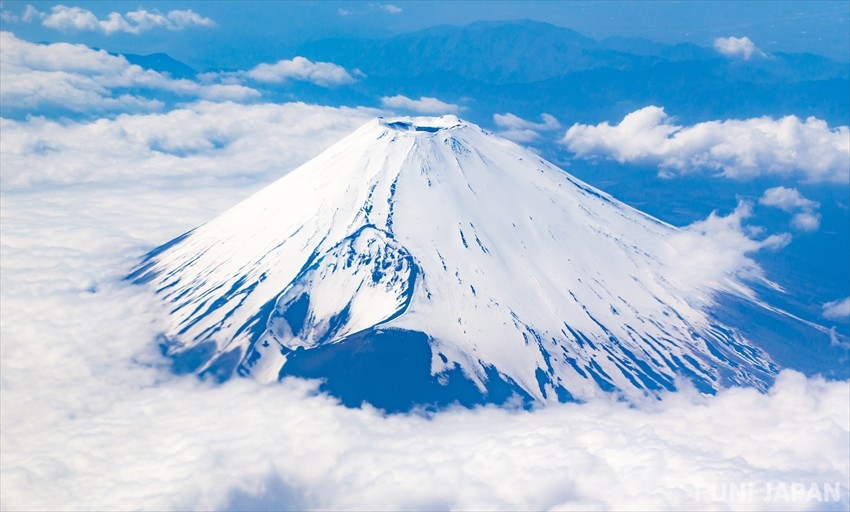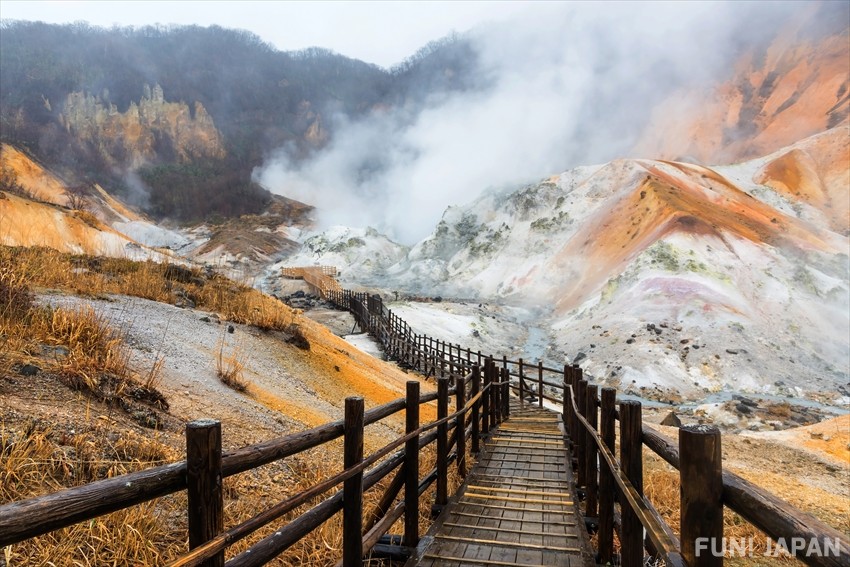
With their National symbol of Mt. Fuji flying the flag for volcanoes, it may be no surprise that Japan has hundreds of volcanoes, but it might be unexpected that over 100 are still active today. Warming hot springs and providing great climbing and skiing terrain, the volcanoes are largely dormant, but some can still pose a risk to life. The island nation has more active volcanoes than any other country and accounts for around 10% of the global count. As it has the highest documented number of eruptions, visitors are more likely to need to know about emergency procedures here than anywhere else.
Why does Japan Have so Many Volcanoes?

Japan is part of the region known as the ‘Pacific Ring of Fire’ and is at the junction of four tectonic plates, with five principal volcanic arcs. These are the Northeast Honshu and the Kurile arcs in the north, the central Izu-Bonin-Mariana arc and the Ryukyu and Southwest Honshu arcs to the south. The first historically recorded volcanic eruption is dated at 553AD from Mt. Aso, with the largest from Mt. Towada in 915AD.
Volcanoes and Hell Valleys

Hell Valleys are called Jigokudani in Japanese and refer to the volcanic areas with steam vents and impressive landscapes which often draw visitors. Some of the most famous are Jigokudani Monkey Park - famed for its onsen-loving monkeys, The Eight Hells of Beppu and Noboribetsu Hell Valley in Hokkaido.
Famous Volcanoes in Japan

Aside from Mt. Fuji, the majority of Japan’s most well-known peaks are actually volcanoes, with varying degrees of activity. Whether they are landmarks, hiking destinations or home to ski-resorts, they are an integral part of the Japanese landscape.
Mount Shirane, Gunma (Active)
An impressive mountain beside the popular hot spring town of Kusatsu, Mt. Shirane is another of Japan’s active volcano. The most recent eruption was in 2018, with one person killed in an avalanche. The Yugama crater is a stunning pale blue and a popular sightseeing spot, with access limited for safety reasons. Otherwise, the hike is easy, with ropeways and scenic drive offering a convenient way to reach the top (when permitted). The nearby town of Kusatsu is a big draw, with hot spring waters heated by the volcanic rumblings below ground.
Mount Fuji, Yamanashi and Shizuoka (Active)
A national symbol, Mt. Fuji’s perfect shape is a classic volcano form and the highest mountain in Japan at 3776m. Still counted as active, the most recent eruption was back in 1707, meaning climbing to the summit is a permitted and popular activity. The mountain is often pictured capped with snow, with hiking only permitted from July to August each year.
Mount Daisen, Tottori
The tallest mountain in the Chugoku region, Mt. Daisen is a popular hiking spot in the Daisen-Oki National Park. Having not erupted for thousands of years, it is a safe hike and has a long history of spiritual significance, with a Buddhist temple and Shinto shrine on its slopes. The mountain’s ridge has several peaks including Misen, Kengamine and Nodagasen. It’s a particularly popular hiking area in autumn with many visitors from across Japan.
Mount Aso, Kyushu (Active)
Mount Aso claims one of the largest calderas in the world (crater) and is another of Japan’s active volcanoes. Its most recent major eruption was on October 20th, 2021, with a prior eruption in 2016. The impressive caldera is 25m in diameter with a 100m circumference with visitors previously able to visit peaks in the caldera. However, due to the recent eruptions, the area is closed.
Sakurajima, Kagoshima (Active)
Mount Sakurajima is one of Japan’s most active volcanoes, with plumes of smoke rising from the crater steadily and small eruptions taking place on a daily basis. It has been predicted by scientists that a large eruption is due within the next 30 years. The volcano is a symbol of the city and is 1117m high, right in the middle of Kagoshima Bay. Prior to a strong eruption in 1914 the volcano was an island, but the lava flow from the eruption created a land bridge, although ferries are still a popular access route. The volcano can be seen from observation points but people cannot go within 2km of the craters.
Major Eruptions in Japan

While many volcanoes are dormant or not considered a risk to visitors, there have been a number of significant eruptions in Japanese history. While some eruptions have directly caused deaths, many have triggered tsunamis causing devastating disasters.
Mount Asama, Gunma - 1108 onwards
The most active volcano on Japan’s main island of Honshu, Mt. Asama is a rank A in the Japanese system. It is home to the University of Tokyo’s volcano observatory and is a major focus of volcanic study thanks to its history of strong eruptions. The Tennin eruption in 1108 is believed to have impacted weather as far as Europe for years after, as well as causing a major famine. It is believed to have been twice the strength of the Tenmei eruption of 1783. In that year three-month plinian eruption killed over 1500 people directly, with over 20,000 believed to have died in the famine it exacerbated in the following years. There have been eruptions in modern times too, in 1982, 1983, over 1,000 earthquakes around the volcano detected in 1995, with the most recent eruption in 2019. The mountain’s activity spans the entirety of Japan’s recorded history, beginning in the year 685.
Mount Higashi and Mount Nishi, Oshima Island, Hokkaido - 1741
A double caldera on an uninhabited island, this volcano was the source of a major eruption in the 18th century. The tsunami it triggered hit the coast of Hokkaido, Western Honshu and even Korea, killing almost 1500 people. The last eruption took place in 1790, with some activity measured in 1996. The island cannot be visited, with some scientific trip allowed with specific permission.
Mount Unzen, Nagasaki - 1792 & 1991
An overlapping run of strato-volcanoes, Mt. Unzen is responsible for one of the highest volcanic-related death tolls in Japan. In 1792 the lava domes collapsed, causing a major tsunami that killed over 14,000 people. Dormant for many years after, it was recently active between 1990 and 1995, with a large eruption in 1991 killing 43 people. The highest peak is Heisei-Shinzan, formed during the activity of the 1990s (in the Heisei era).
Mount Bandai, Fukushima - 1888
Another of Japan’s strato-volcanos, Mt. Bandai is on the list of Japan’s 100 most famous mountains and has geopark status. The volcano has been active for almost 300,000 years with the most significant recorder eruption taking place in 1888 with five villages buried and 477 people killed. It was the first disaster under the new modern Japanese Government of the Meiji era, and was carefully recorded and investigated. Today it is a popular hiking mountain and is not considered a threat.
Torishima, Izu Islands - 1902
Meaning bird-island, Torishima is a now uninhabited island in the Izu Islands. The island was formed by an active submarine volcano with the peak at 394m. Originally only lived on by shipwrecked sailors, it was inhabited in the Meiji period, with its albatross population creating a source of livelihood for residents. In 1902 however, the island’s entire population was killed by an eruption and the island has been uninhabited ever since. Bird watching is a popular draw for the island, but visitors can only observe by boat.
Mount Ontake, Nagano - 2014
The second highest volcano and the 14th highest mountain in Japan, Mt. Ontake was a popular hiking route but is now mainly associated with a tragic volcanic disaster. On September 27th 2014, without warning, the volcano erupted in the peak of the hiking day. An easy hike and at the start of the autumn leaves season, there were hundreds of people on the mountain at the time, with 58 killed and five missing.
The Japanese Volcanic Warning System

Japan has a comprehensive volcanic warning system in order to inform those nearby of potential volcanic disasters. These exist for areas around the crater and residential areas, with a volcanic forecasts also issued. When warnings are issued they are released to public broadcasters such as NTT or NHK, emergency services such as the police, fire service and ambulances and governmental agencies such as the Ministry of Land, Infrastructure, Transport and Tourism and the Japan Coastguard. These will in turn inform residents, and vessels as to what action to take.
The Volcanic Alert System
The five levels fall into three categories: Forecast (Level 1), Warning (Levels 2 and 3) and Emergency Warning (Levels 4 and 5).
- Level 1: There is a chance of ash emissions, with some risk to people at the crater. There is no action required for nearby residents, but climbers should possibly refrain from approaching the crater.
- Level 2: An eruption or potential eruption with no action required by residents, but climbers should refrain from approaching the crater.
- Level 3: An eruption or potential eruption that would be a threat to places near residential areas. Residents should prepare to evacuate those who may need help (the elderly, disabled) and stay alert. Climbers should not enter the dangerous zone as determined by the activity.
- Level 4: An eruption or potential eruption that would be a direct threat to residential areas. Residents should prepare to evacuate and those who are unable to manage (the elderly, disabled) should be evacuated in advance. Anyone climbing should evacuate immediately.
- Level 5: An eruption or potential eruption that would cause serious damage to residential areas. Residents to evacuate from the area immediately. Anyone climbing should evacuate immediately.
What to do in Case of a Volcanic Emergency in Japan

If you are present during a volcanic emergency in Japan it is best to follow the advice provided from official sources. For those hiking, guides and hut owners can provide information, with safety information to be researched in advance if climbing an active volcano. There are often volcano shelters along walking routes. For those in residential areas, it is best to find an official source of information such as NHK - the national broadcaster. Being aware of additional risks such as tsunamis is key in coastal areas, with evacuation shelters clearly signposted. J-Alert is the Japanese warning system used for natural disasters, with television, radio, cellphone and city loudspeaker announcements made in times of emergency.

Comments